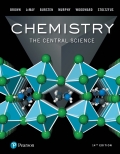
EBK CHEMISTRY:CENTRAL SCIENCE
14th Edition
ISBN: 9780134554570
Author: Brown
Publisher: PEARSON
expand_more
expand_more
format_list_bulleted
Concept explainers
Textbook Question
Chapter 2, Problem 35E
Only two isotopes of copper occur naturally:63Cu (atomic mass = 62.9296 amu; abundance 69.1795) 65Cu (atomic mass = 64.9278 amu; abundance 30.83%). Calculate the atomic weight (
ofcopper
Expert Solution & Answer
Want to see the full answer?
Check out a sample textbook solution
Students have asked these similar questions
Pls help me on this q.
Given the elementary reactions in an aqueous medium with an ionic strength of 0.001:1) CH3Br + OH- → CH3OH + Br-2) ClCH2COO- + OH- → HOCH2COO- + Cl-3) [Co(NH3)5Br]2+ + NO2- →[Co(NH3)5NO2]2+ + Br-If the ionic strength is decreased, 1) k will not change; 2) k will decrease; and 3) k will increase. Is this correct?
Relate zero ionic strength and infinite dilution limit.
Chapter 2 Solutions
EBK CHEMISTRY:CENTRAL SCIENCE
Ch. 2.3 - Which of the following factors determines the size...Ch. 2.3 - Practice Exercise 2 The diameter of a cartoon atom...Ch. 2.3 - Practice Exercise 1 Which of these atoms has the...Ch. 2.3 - Practice Exercise 2
How many protons, neutrons,...Ch. 2.3 - Prob. 2.3.1PECh. 2.3 - Practice Exercise 2
Give the complete chemical...Ch. 2.4 - Practice Exercise 1 There are two stable isotopes...Ch. 2.4 - Practice Exercise 2
Three isotopes of silicon...Ch. 2.5 - Practice Exercise 1 A biochemist who is studying...Ch. 2.5 - Practice Exercise 2 Locate Na (sodium) and Br...
Ch. 2.6 - Practice Exercise 1 Tetra carbon dioxide is an...Ch. 2.6 - Practice Exercise 2 Give the empirical formula for...Ch. 2.7 - Practice Exercise 1 In which of the following...Ch. 2.7 - Practice Exercise 2 How many protons, neutrons,...Ch. 2.7 - Practice Exercise 1
Although it is helpful to...Ch. 2.7 - Prob. 2.8.2PECh. 2.7 - Prob. 2.9.1PECh. 2.7 - Prob. 2.9.2PECh. 2.7 - Prob. 2.10.1PECh. 2.7 - Practice Exercise 2
Write the empirical formula...Ch. 2.8 - Practice Exercise 1 Which of the follow-mg ox...Ch. 2.8 - Prob. 2.11.2PECh. 2.8 - Prob. 2.12.1PECh. 2.8 - Prob. 2.12.2PECh. 2.8 - Prob. 2.13.1PECh. 2.8 - Prob. 2.13.2PECh. 2.8 - Prob. 2.14.1PECh. 2.8 - Practice Exercise 2
Give the chemical fomi uias...Ch. 2.9 - Prob. 2.15.1PECh. 2.9 - Prob. 2.15.2PECh. 2 - Prob. 1ECh. 2 - The followmg diagram is a representation of 20...Ch. 2 - 2 3 Four of the boxes in the following periodic...Ch. 2 -
24 Does the following drawing represent a neutral...Ch. 2 - 2.5 Which of the following diagrams most likely...Ch. 2 - Write the chemical formula for the following...Ch. 2 - Prob. 7ECh. 2 - Prob. 8ECh. 2 - 2.9 Are these two compounds isomers? Explain....Ch. 2 - 2.10 In the Millikan oil-drop experiment (see...Ch. 2 - A 1.0-g sample of carbon dioxide (002) is fully...Ch. 2 - Hydrogen sulfide is composed of two elements:...Ch. 2 - A chemist finds that 30.82 g of nitrogen will...Ch. 2 - 2 . 14 In a series at exper'ments. a chemist...Ch. 2 - 215 Which of the three subatomic particles was...Ch. 2 - 2.16 An unknown particle is caused to move between...Ch. 2 - 2.17 What fraction of α particle in Rutherford’s...Ch. 2 - it 18 Millikan determined the charge on the...Ch. 2 - The radius of an atom of gold (Au) is about 1.35 Å...Ch. 2 - 220 An atom of rhodium (Rh) has a diameter of...Ch. 2 - 2.21 Answer the following questions without...Ch. 2 - Determine whether each of the following statements...Ch. 2 - Consider an atom of "B. a. How many protons,...Ch. 2 - Consider an atom of 63Cu. a. How many protons,...Ch. 2 - 2.25
3. Define atomic number and mass number
b....Ch. 2 -
2 26
Which two of the following are isotopes of...Ch. 2 - How many ptotons, neutrons, and electrons are in...Ch. 2 - 2-28 Each of the following isotopes is used in...Ch. 2 - Prob. 29ECh. 2 - Fill in the gaps in the following table, assuming...Ch. 2 - Write the correct symbol, with both superscript...Ch. 2 - One way in which Earth's evolution as a planet can...Ch. 2 - 2.33
a. What isotope is used as the standard in...Ch. 2 - 2.34
a. What is the mass in amu of a carbon-12...Ch. 2 - Only two isotopes of copper occur naturally:63Cu...Ch. 2 - 2.36 Rubidium has two naturally occurring...Ch. 2 - a. Thomson’s cathode-ray tube (Figure 2.49) and...Ch. 2 -
2.38 Consider the mass spectrometer shown in...Ch. 2 - Naturally occurring magnesium has the following...Ch. 2 - Mass spectrometry is more often applied to...Ch. 2 - 2-41 For each of the following elements, write its...Ch. 2 - Locate each of the following elements in the...Ch. 2 - 2-43 For each of the following elements, write its...Ch. 2 - 2.44 The elements of group 4A show an interesting...Ch. 2 - 2.45 The structural formulas of the compounds...Ch. 2 - 2.46 Ball-and-stick representations of benzene, a...Ch. 2 - 2447 What are the molecular and empirical formulas...Ch. 2 -
2.48 Two substances have the same molecular and...Ch. 2 - 2.49 Write the empirical formula corresponding to...Ch. 2 - Determine the molecular and empirical formulas of...Ch. 2 - 251 How many hydrogen atoms are un each of the...Ch. 2 - Prob. 52ECh. 2 - 253 Write the molecular and structural formulas...Ch. 2 - 2-54 Write the molecular and structural formulas...Ch. 2 - Fill in the gaps in the following table’Ch. 2 - 2.56 Fill in the gaps in the following...Ch. 2 - Each of the following elements is capable of...Ch. 2 - Using the periodic table, predict the charges of...Ch. 2 - 2.59 Using the periodic table to guide you,...Ch. 2 - 2-60 The most common charge associated with...Ch. 2 - 2.61 Predict the chemical formula for the ionic...Ch. 2 - Predict the chemical formulas of the compounds...Ch. 2 - Prob. 63ECh. 2 - Prob. 64ECh. 2 - Predict whether each of the following compounds is...Ch. 2 - 2.66 Which of the following are ionic, and which...Ch. 2 - Prob. 67ECh. 2 - Prob. 68ECh. 2 -
2.69 Give the names and charges of the cation and...Ch. 2 - Give the names and charges of the cation and anion...Ch. 2 -
2.71 Name the following ionic compounds:
a....Ch. 2 - Prob. 72ECh. 2 -
2.73 Write the chemical formulas for the...Ch. 2 -
Give the chemical formula for each of the...Ch. 2 -
2.75 Give the name or chemical formula, as...Ch. 2 - Prob. 76ECh. 2 -
2.T Give the name or Chemical formula, as...Ch. 2 - The oxides of nitrogen are very important...Ch. 2 - Prob. 79ECh. 2 - Assume that you encounter the following sentences...Ch. 2 - a. What is a hydrocarbon? b. Pentane is the alkane...Ch. 2 - 2.82
a. What is meant by the term isomer?
b. Among...Ch. 2 -
2.83
What is a functional group?
What functional...Ch. 2 -
2.84 Consider the following organic substances:...Ch. 2 -
2.85 Chloropropane is derived from propane by...Ch. 2 -
2.86 Draw the structural formulas for three...Ch. 2 - Suppose a scientist repeats the Millikan oil-drop...Ch. 2 -
2.88 The natural abundance of 3He is...Ch. 2 - A cube of gold that is 1.00 cm on a side has a...Ch. 2 -
2.90 The diameter of a rubidium atom is 4.95 A....Ch. 2 -
2.91
Assuming the dimensions of the nucleus and...Ch. 2 -
2.92 Identify the element reoresented by the each...Ch. 2 -
2.93 The nucleus of 6Li is a powerful absorber of...Ch. 2 - The element oxygen has three naturally occurring...Ch. 2 - The element lead (Pb) consists of four naturally...Ch. 2 -
2.96 Gallium (Ga) consists of two naturally...Ch. 2 - Using a suitable reference such as the CRC...Ch. 2 - There are two different isotopes of bromine atoms....Ch. 2 -
2.99 It is common in mass spectrometry to assume...Ch. 2 - From the following list of elements—Ar, H, Ga, Al,...Ch. 2 -
2.101 The first atoms of seaborgium (Sg) were...Ch. 2 -
2.102 The explosion of an atomic bomb releases...Ch. 2 -
2.103. A U.S. 1-cent coin (a penny) has a...Ch. 2 -
2.104 The U.S. Mint produces a dollar coin called...Ch. 2 -
2.105 From the molecular structures shown here,...Ch. 2 -
2.106 Name each of the following oxides. Assuming...Ch. 2 - Prob. 107AECh. 2 -
2.108 Cyclopropane is an interesting hydrocarbon....Ch. 2 - Prob. 109AECh. 2 - Prob. 110AECh. 2 - Give the chemical names of each of the following...Ch. 2 -
2.112 Many familiar substances have common,...Ch. 2 -
2.113 Because many ions and compounds have very...Ch. 2 -
2.114 In what part of the atom does the strong...
Knowledge Booster
Learn more about
Need a deep-dive on the concept behind this application? Look no further. Learn more about this topic, chemistry and related others by exploring similar questions and additional content below.Similar questions
- The photolysis of H3C–N=N–C2H5 involves the breaking of the single bonds shown. According to this, in addition to N2, what products would be obtained primarily if the reaction were carried out in the gas phase or in solution in an inert solvent?arrow_forwardGiven a keto-enol tautomerization reaction, which is greatly influenced by the type of solvent, indicate which of the following solvent properties cannot be considered a "solvent effect"?(A) Dielectric constant(B) Polarity(C) Hydrogen bonding capacity(D) Temperaturearrow_forwardIn solution reactions, what does "solvent effect" mean?arrow_forward
- How to solvearrow_forwardIndicate the concentration and ionic strength ranges to which the Debye-Huckel equation can be applied. And the Davies equation?arrow_forwardIf the ionic strength (I) of a solution is very low, the Debye-Huckel equation is used. If I is higher, the Davies equation is used. What is the correct value for I to use one or the other?arrow_forward
- In both the Debye-Huckel equation and the Davies equation, there is a constant A. I see that sometimes it appears as 0.51 and other times as 1.02. Explain why one or the other value is used.arrow_forwardThe two equations are forms of the Davies equation, used in thermodynamics for activity coefficients: ال log Y₁ = -Az² - 0,31 log = Az² - 0,31 1 + √Ĩ 1 + √√ k These equations are consistent and imply that Yi = Is this last equation correct? karrow_forwardThe two equations are forms of the Davies equation, used in thermodynamics for activity coefficients: ال log Y₁ = -Az² - 0,31 log = Az² - 0,31 1 + √Ĩ 1 + √√ k These equations are consistent and imply that Yi = Is this last equation correct? karrow_forward
- For the Davies equation, both expressions are correct: log Y₁ = -Az² √i - 0,31 1 + √ k log- = Az - 0,31 k 1 + √Ĩarrow_forwardk In Davies' equation log y₁ = log- log y₁ = log | = -Az² + ✓// k A is a constant that always equals 1.02. Correct? - 0,31arrow_forwardIndicate whether the equality is true Yi How is it obtained? k%arrow_forward
arrow_back_ios
SEE MORE QUESTIONS
arrow_forward_ios
Recommended textbooks for you
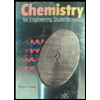 Chemistry for Engineering StudentsChemistryISBN:9781337398909Author:Lawrence S. Brown, Tom HolmePublisher:Cengage Learning
Chemistry for Engineering StudentsChemistryISBN:9781337398909Author:Lawrence S. Brown, Tom HolmePublisher:Cengage Learning Chemistry: The Molecular ScienceChemistryISBN:9781285199047Author:John W. Moore, Conrad L. StanitskiPublisher:Cengage Learning
Chemistry: The Molecular ScienceChemistryISBN:9781285199047Author:John W. Moore, Conrad L. StanitskiPublisher:Cengage Learning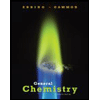 General Chemistry - Standalone book (MindTap Cour...ChemistryISBN:9781305580343Author:Steven D. Gammon, Ebbing, Darrell Ebbing, Steven D., Darrell; Gammon, Darrell Ebbing; Steven D. Gammon, Darrell D.; Gammon, Ebbing; Steven D. Gammon; DarrellPublisher:Cengage Learning
General Chemistry - Standalone book (MindTap Cour...ChemistryISBN:9781305580343Author:Steven D. Gammon, Ebbing, Darrell Ebbing, Steven D., Darrell; Gammon, Darrell Ebbing; Steven D. Gammon, Darrell D.; Gammon, Ebbing; Steven D. Gammon; DarrellPublisher:Cengage Learning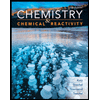 Chemistry & Chemical ReactivityChemistryISBN:9781337399074Author:John C. Kotz, Paul M. Treichel, John Townsend, David TreichelPublisher:Cengage Learning
Chemistry & Chemical ReactivityChemistryISBN:9781337399074Author:John C. Kotz, Paul M. Treichel, John Townsend, David TreichelPublisher:Cengage Learning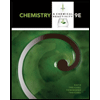 Chemistry & Chemical ReactivityChemistryISBN:9781133949640Author:John C. Kotz, Paul M. Treichel, John Townsend, David TreichelPublisher:Cengage Learning
Chemistry & Chemical ReactivityChemistryISBN:9781133949640Author:John C. Kotz, Paul M. Treichel, John Townsend, David TreichelPublisher:Cengage Learning Chemistry: Principles and ReactionsChemistryISBN:9781305079373Author:William L. Masterton, Cecile N. HurleyPublisher:Cengage Learning
Chemistry: Principles and ReactionsChemistryISBN:9781305079373Author:William L. Masterton, Cecile N. HurleyPublisher:Cengage Learning

Chemistry for Engineering Students
Chemistry
ISBN:9781337398909
Author:Lawrence S. Brown, Tom Holme
Publisher:Cengage Learning

Chemistry: The Molecular Science
Chemistry
ISBN:9781285199047
Author:John W. Moore, Conrad L. Stanitski
Publisher:Cengage Learning

General Chemistry - Standalone book (MindTap Cour...
Chemistry
ISBN:9781305580343
Author:Steven D. Gammon, Ebbing, Darrell Ebbing, Steven D., Darrell; Gammon, Darrell Ebbing; Steven D. Gammon, Darrell D.; Gammon, Ebbing; Steven D. Gammon; Darrell
Publisher:Cengage Learning

Chemistry & Chemical Reactivity
Chemistry
ISBN:9781337399074
Author:John C. Kotz, Paul M. Treichel, John Townsend, David Treichel
Publisher:Cengage Learning

Chemistry & Chemical Reactivity
Chemistry
ISBN:9781133949640
Author:John C. Kotz, Paul M. Treichel, John Townsend, David Treichel
Publisher:Cengage Learning

Chemistry: Principles and Reactions
Chemistry
ISBN:9781305079373
Author:William L. Masterton, Cecile N. Hurley
Publisher:Cengage Learning
The Bohr Model of the atom and Atomic Emission Spectra: Atomic Structure tutorial | Crash Chemistry; Author: Crash Chemistry Academy;https://www.youtube.com/watch?v=apuWi_Fbtys;License: Standard YouTube License, CC-BY